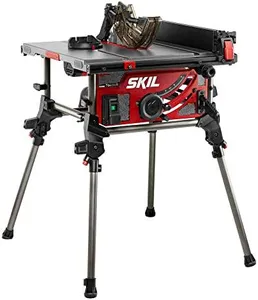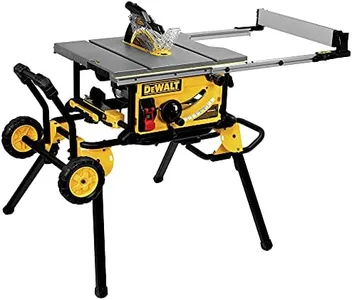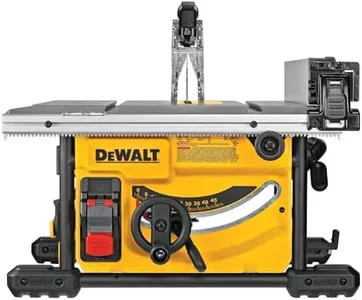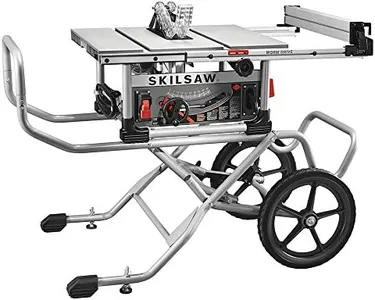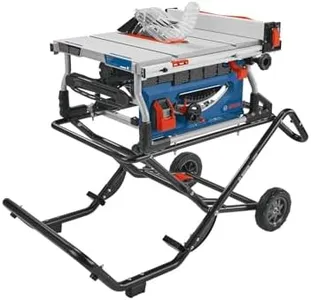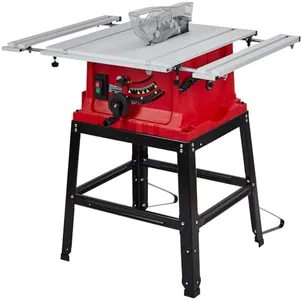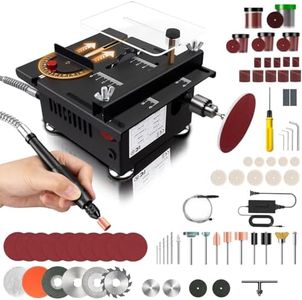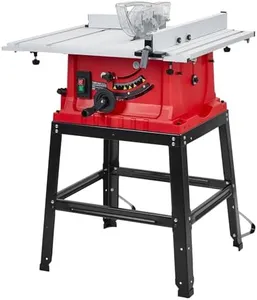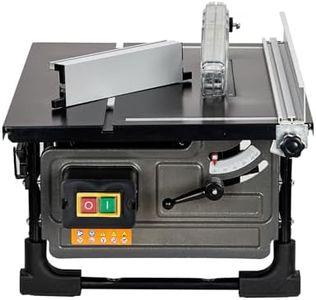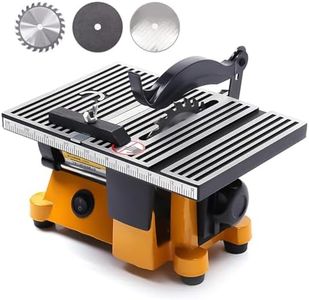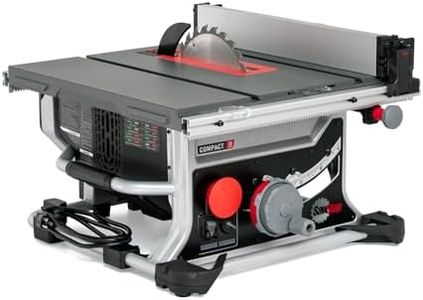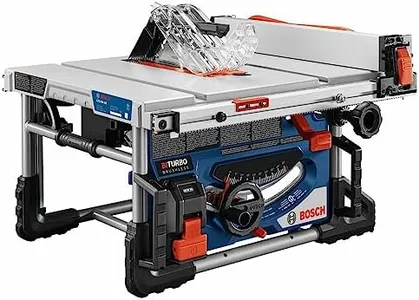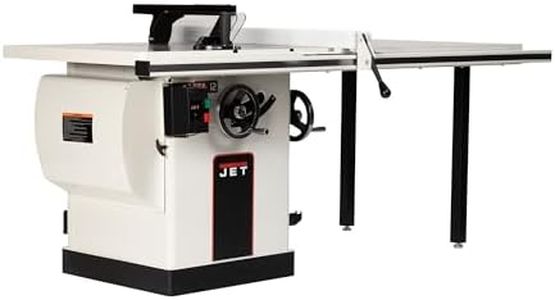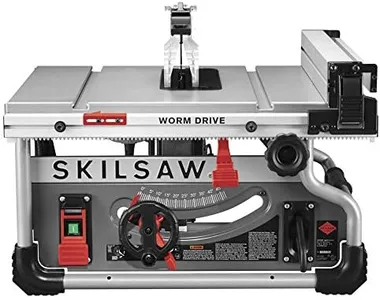10 Best Contractor Table Saws 2025 in the United States
Our technology thoroughly searches through the online shopping world, reviewing hundreds of sites. We then process and analyze this information, updating in real-time to bring you the latest top-rated products. This way, you always get the best and most current options available.

Our Top Picks
Winner
SKIL 15 Amp 10 Inch Portable Jobsite Table Saw with Folding Stand- TS6307-00
Most important from
2458 reviews
The SKIL 15 Amp 10 Inch Portable Jobsite Table Saw is a strong contender for contractors seeking a reliable and portable saw. One of its key advantages is the rack and pinion fence rails, which provide precise and smooth cutting by keeping the fence parallel to the blade. The integrated folding stand enhances its portability, allowing for easy setup and storage, which is great for job sites where space is limited. With a 4x4 cutting capacity at 90 degrees and 2-47° bevel capacity, it caters to a variety of cutting needs, making it versatile for different projects.
Dust collection is another strong point with the dust port elbow that helps redirect debris into a container, promoting a cleaner work environment. Safety is prioritized as well, with features like a blade guard and anti-kickback pawl that offer protection during operation. The saw is powered by a 15 Amp motor, providing ample strength for cutting through wood.
However, the saw does have some drawbacks. Weighing 51.2 pounds, it may be on the heavier side for some users looking for ultra-portability. While it is designed for job site use, individuals needing to frequently transport their tools might find it a bit cumbersome. Additionally, due to its corded electric setup, users need to consider access to power sources on job sites. Lastly, while it can handle most wood cutting tasks, it might struggle with more demanding materials or larger projects that require heavier-duty equipment.
This table saw is well-suited for contractors who need a balance of portability, safety, and cutting precision for woodwork, though those who prioritize lightweight tools or plan to cut a wider range of materials may want to explore other options.
Most important from
2458 reviews
DEWALT 10-Inch Table Saw with Rolling Stand, 32-1/2-Inch Rip Capacity (DWE7491RS)
Most important from
5460 reviews
The DEWALT DWE7491RS is a solid choice for contractors looking for a reliable table saw. With its powerful 15 amp motor, it can easily handle hardwoods, making it suitable for various cutting tasks in woodworking projects. The 32-1/2-inch rip capacity allows for cutting larger materials, which is a significant advantage for contractors who often work with shelving or trim. The rack & pinion telescoping fence system enhances accuracy and ease of use, allowing quick adjustments and smooth operation.
Portability is another strong point, as the saw features a rolling stand that simplifies setup and breakdown while ensuring stability during use. The compact design with retractable fence rails makes it easy to transport, which is ideal for contractors who move between job sites. Additionally, the onboard storage system keeps essential tools and components organized and within reach, adding to the user-friendly design.
The dust collection port is convenient and connects to a vacuum for better cleanup, but it might not be sufficient for larger projects where dust can accumulate quickly. Some users might find the weight of the saw cumbersome when transporting, despite the rolling stand. Safety features, although present, might require additional attention as safety is paramount in any workshop setting. The DEWALT DWE7491RS is well-suited for contractors who need a powerful, portable table saw with a good rip capacity and accurate fence system. Those working in particularly dusty environments may need to complement the dust collection system with additional solutions, and careful handling is advised given its weight during transport.
Most important from
5460 reviews
DEWALT 15 Amp 8-1/4 in. Compact Portable Jobsite Table Saw (DWE7485)
Most important from
6485 reviews
The DEWALT Table Saw for Jobsites (DWE7485) stands out with its powerful 15-amp motor, capable of delivering high performance for tough cutting tasks. The 8-1/4-inch blade is slightly smaller than the standard 10-inch blades found in many table saws, but it still offers a decent cutting capacity and is well-suited for on-site jobs where space and portability are essential. The rack and pinion telescoping fence rails ensure accurate and smooth fence adjustments, contributing to precise cuts.
Additionally, the Site-Pro Modular Guarding System enhances safety by providing easy-to-use guarding components that can be adjusted based on the specific job requirements. Weighing 54 pounds, this saw is reasonably portable, making it a practical choice for contractors who need to transport their tools frequently. The included accessories such as the anti-kickback pawls, push stick, and miter gauge add to its convenience and functionality.
However, its dust collection capabilities are not specifically highlighted, which might be a consideration for those prioritizing a cleaner work environment. With features like a 3-year limited warranty and a reputation for durability, this DEWALT table saw is a strong contender for contractors needing a versatile and dependable tool for jobsite use.
Most important from
6485 reviews
Buying Guide for the Best Contractor Table Saws
Choosing the right contractor table saw can make a significant difference in the quality and efficiency of your woodworking projects. Contractor table saws are versatile and powerful tools designed for both professional contractors and serious hobbyists. When selecting a contractor table saw, it's important to consider several key specifications to ensure you get the best fit for your needs. Understanding these specs will help you make an informed decision and choose a saw that meets your specific requirements.FAQ
Most Popular Categories Right Now
